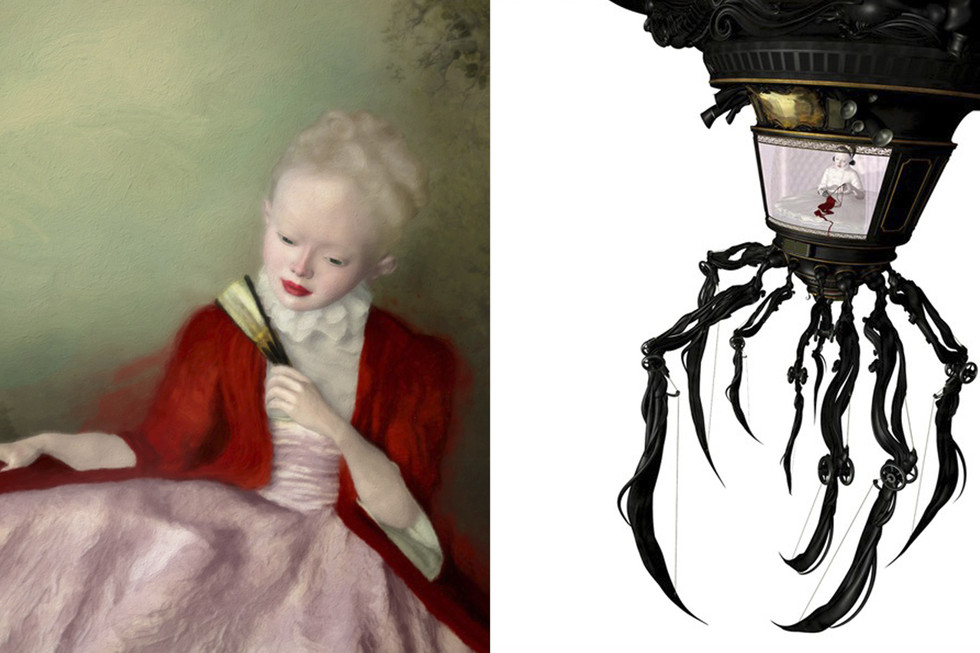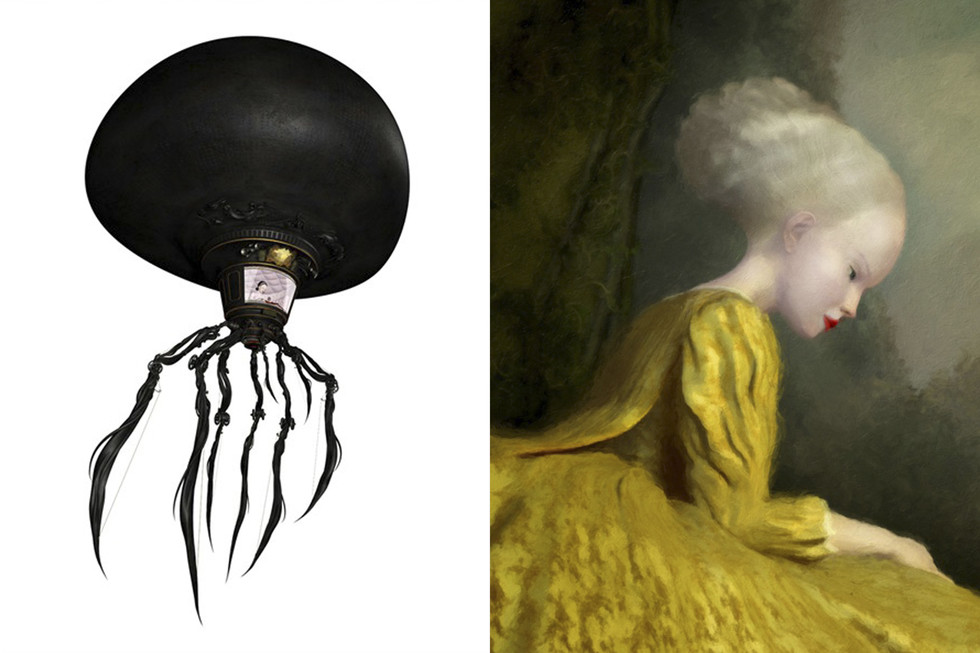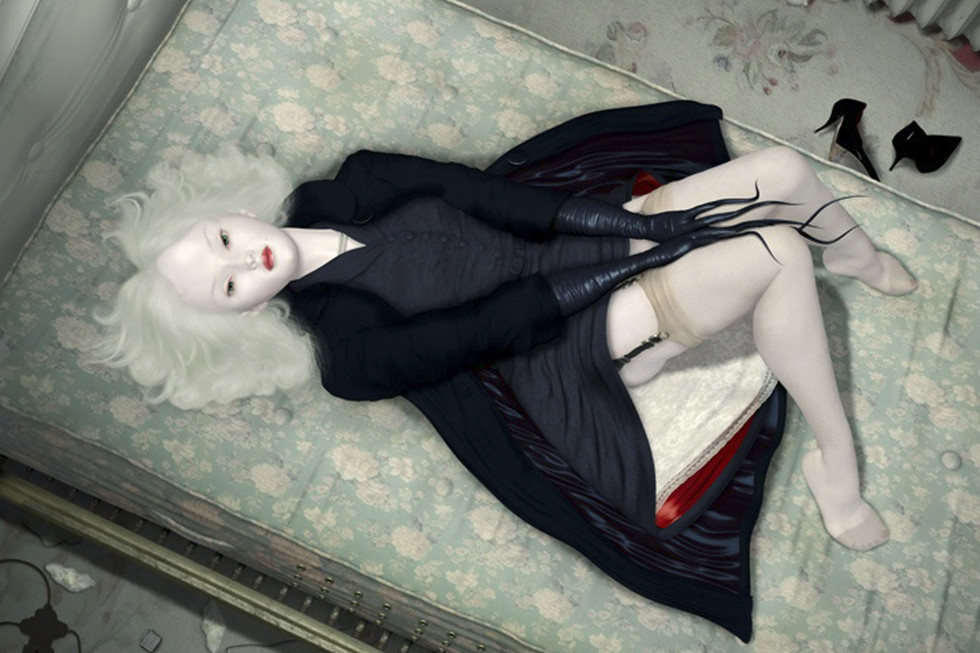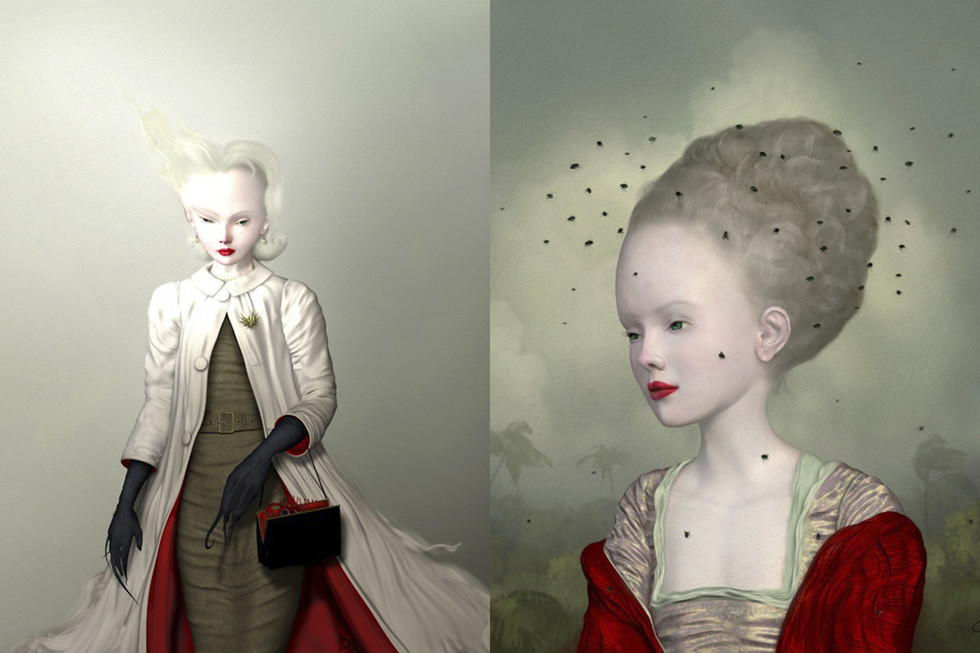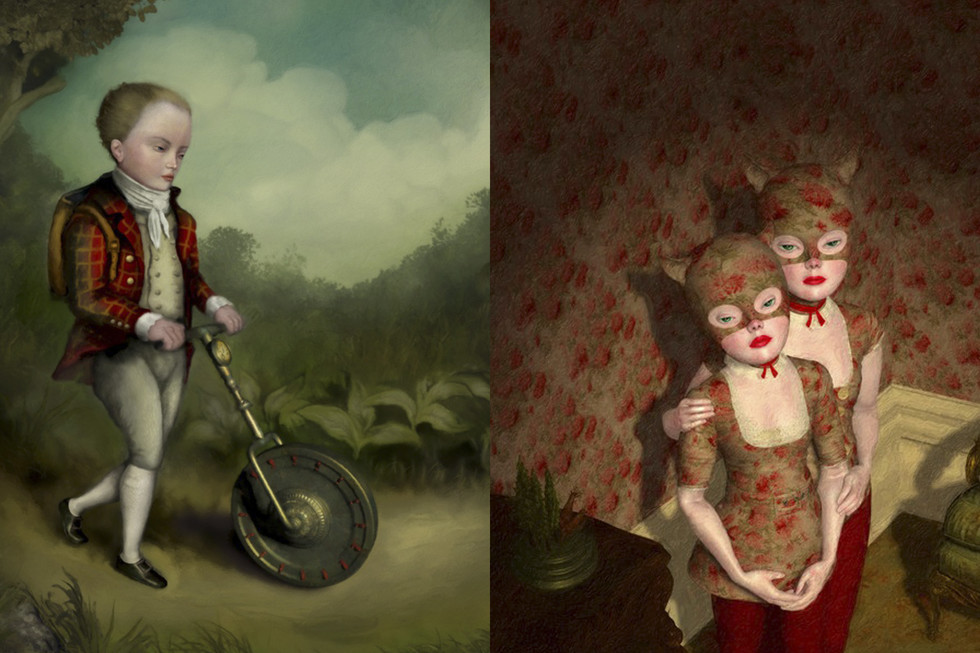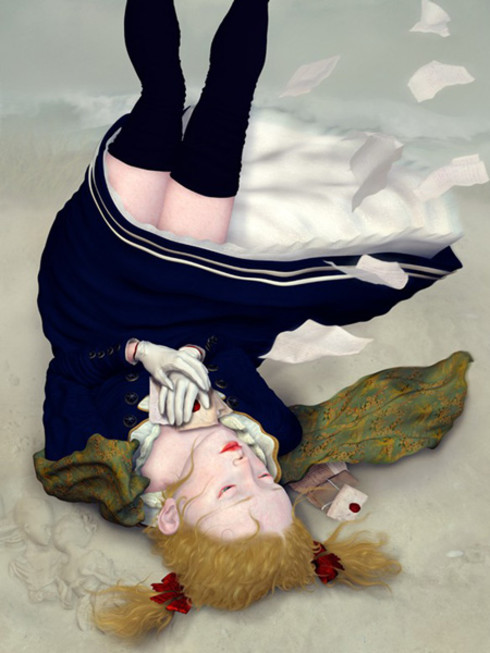An interview with Ray Caesar
Written by Michaela WidergrenI had some questions for the extraordinary artist, human being and dog named Ray Caesar to answer. After he did, I couldn’t help but to become even more fascinated by his work and his story.
Some people are just meant for greatness.
Ray, please describe yourself, who are you?
I am a very simple quiet person who smiles a lot and I suppose I am very polite as if I had stepped out of a Jane Austin novel. I tend not to have any beliefs or dis-beliefs but live in a perpetual state of wonder and I often wonder why other humans have to make others believe in their own beliefs rather than taking joy in that we are so varied. I have my share of problems but I am also blessed with an odd sense of humor that helps me keep them in perspective.
What happens on a regular day in your life?
It begins with my wife singing as she washes her hair and my dog barking at god knows what and me sitting bolt upright in bed in a hair net and eye mask going “Wassatt!?”… Breakfast is anything with brutal amounts of fiber. A feeble attempt at exercise and a two-hour walk I call “my constitutional” that ends me up at Starbucks with a Grande Americano as I sketch in my moleskin book. Then home and work, work, work…
We cook and we eat. I work some more. I relax for half an hour and read or watch a Jane Austin movie, talk a bit, play with the dog, bed time with a thimble of Brandy… Then I dream a lot and then I wake up in a bolt as some dog is barking and some pretty girl is singing. Life is good.
In your biography you describe yourself as a dog, how come? Why a dog?
I was born in 1958 which was the year of the dog, I was the youngest of four in a very volatile family in South London that would have reminded you of a pack of wolves. As a child I was known to run out in traffic so they put me on a leash. I used to bring stray dogs home and make them a cup of sweet tea and give them a biscuit as I thought everyone liked a nice cup of tea.
I met my wife when I was fifteen while I was working as a busboy in a hotel bar. When she first saw me she laughed and said I looked like a scruffy dog… she told me how much she loved dogs. I took it as a compliment as a few weeks later she told me she was going to marry me and I didn’t think twice… A few treats and a promise of a walk and a warm bed and I am along for the ride.
Are you an animal lover?
Absolutely! I love all animals, even “human beings” I suppose…
Although they can be a bit challenging if you try to domesticate them and they are particularly hard to house train, a treat goes a long way with them but you have to count your fingers afterward. I have a fourteen year old coyote called Bonnie who was found starving in the wild many years ago and he is very sweet. I think it is our duty on this planet to make sure we do not encroach any further into the habitats of other species and by study and empathy to create a world in which we can coexist with all other species.
I have this odd feeling that all life is somehow connected through a kind of morphic field… I think that each creature on Earth is absolutely astounding and marvelous and how lucky we are to be part of this unique garden we call Earth.
Who are the people in your images? What is the story? Would you call your art a form of storytelling?
I think if you put all my work I have done since childhood in one room you would see one long story of my life. I am not just reliving the past… I am also writing my own future in pictures. I am expressing the emotions and feelings that I don’t have words for. The figures in my work are a form of self portrait of not just myself but my memory and how I work with and change and manipulate that memory whether it be pleasurable or not. To make all memory, good or bad a treasure! Make it something I can live with.
I worked 17 years in a children’s hospital and that place still haunts my dreams and the people and children in my pictures are a reflection of their souls and presence I still feel as part of the fabric of who I am. The archetype of the divine child… that little ancestor in each one of use that learned to walk and talk and survive is the main character in my story. Its the hunter that hunts back their innocence and uses that to build their soul into a loving and kind and empathetic creature. We all have this in us and the child of who we were is a symbol of growth, a spiritual growth! That upholds the adult we are on the shoulders of the child of who we were.
How do you work with symbolism? (if you do…)
I do but it tends to be a personal form of symbolism that can some times only mean something to me. I do work very much with common Jungian archetypes and often use symbol and metaphor and narrative from the history of art and mythology. Sometimes there are subtle symbols that are from previous forms of communication like how a fan is held in hand or whether a finger is pointed to the spleen ( historically a sign of a melancholy person ).
Most often though the symbols I use are the ones that appear from my own dreams and subconscious such as the telephone or the clock. Although I use these symbols I don’t spend time thinking about them as I create… I don’t plan and design the use of them but they just seem to appear because subconsciously I know about them and most often the symbols mean something to me personally.
When I put a blood red rose with thorns in a piece, it is a direct memory of my Mother… Her nature is usually in that piece and I can’t think of a rose with thorns without thinking of her. We all have a language of symbols that mean something to us personally and art is the perfect place to communicate that hidden language we all carry deep inside.
How does it affect your artistry, working with a computer instead of a canvas?
I never really think about it as I have used both and they are just a method. I just use whatever tools are at hand to make what I see in my head a reality. The main tool I work with is my mind and memory and my subconscious world. The pencil, brush or computer is just a method of getting the work out of my head and onto a surface. What I love about working in a 3 dimensional virtual environment is that I can hide objects within other objects and hide lockets with pictures of those I have lost in my family, and I can put them inside the drawers of a cabinet beside the bed of a figure.
No one can see that picture in the locket in the drawer but I know it’s there and that’s important to me. I can cover my virtual models with my skin or the skin of my wife and that’s fun and has meaning for me also. I am interested in waking up each morning and making what I love… What I want to see and in that I am trying to express some very deep emotions and feelings. I cant say that I am trying to make “art”… I am just spending the rest of my life doing what I want to do and doing it the way I want to do it.
I don’t think I am creating “artistry” I think of it as “play”, as “fun” as an expression of my life and soul in images or a virtual environment. I try very hard not to think about computers or paint or pencils or art or galleries or selling work… I just think about playing and making a picture which is of something in my own mind.
Do you have a favorite piece, if yeas, why?
No, I absolutely refuse on a moral obligation to never have a favorite piece. They are all like a basket of puppies and I treasure the time I have given each one and treasure the gift that each piece has given me. I also find that over time they all seem to not be separate things to me as I see all my work in a kind of entirety. Its as if my favorite thing about the work is the body of it. I can see my work grow and change and I love that. I can see a rhythm in my work that feels like a rhythm inside the core of who I am and I like that too. I can see my pain and the difficulty in some pieces and the joy and happiness in others.
I don’t think this is just true for artists, when we all look back on our lives we might have a favorite day but it wouldn’t be able to be that day without all the other days. It’s the rhythms in our lives that becomes important… Both the good and the not so good in our lives make up a feeling that’s hard to describe. Making a picture, or music, or a family, or a happy life for a cat or dog or just living a creative life or a healing life in some way is important. The way we live is an expression of who we are and its never to late to express yourself.
And lastly, who is your client? Tell us about the buyer of your work…
I have no idea… sometimes I hear of well known or famous people buying the work and that’s fun but I think all kinds of people seem to respond to my work in a positive way and some in a negative way.
For many years I couldn’t see people buying my work so I kept it in a closet. I used to paint then but also did a great deal of digital work as I have been using computers for over 30 years. I get a lot of mail and sometimes the people who purchase it mail me and want to hear about the work. One man told me he bought a piece for his collection and when people came over “everyone commented on the work”. Either good or bad but they never walked past it without comment and he loved that as it stimulated talk and conversation.
I put a lot of emotional baggage in my work and I sort of love the idea that all my problems and emotional turmoil are all packed up in pictures and people buy that package. I put a lot of love and care and tenderness and happiness in the work too so I like that those things go along for the ride also.



